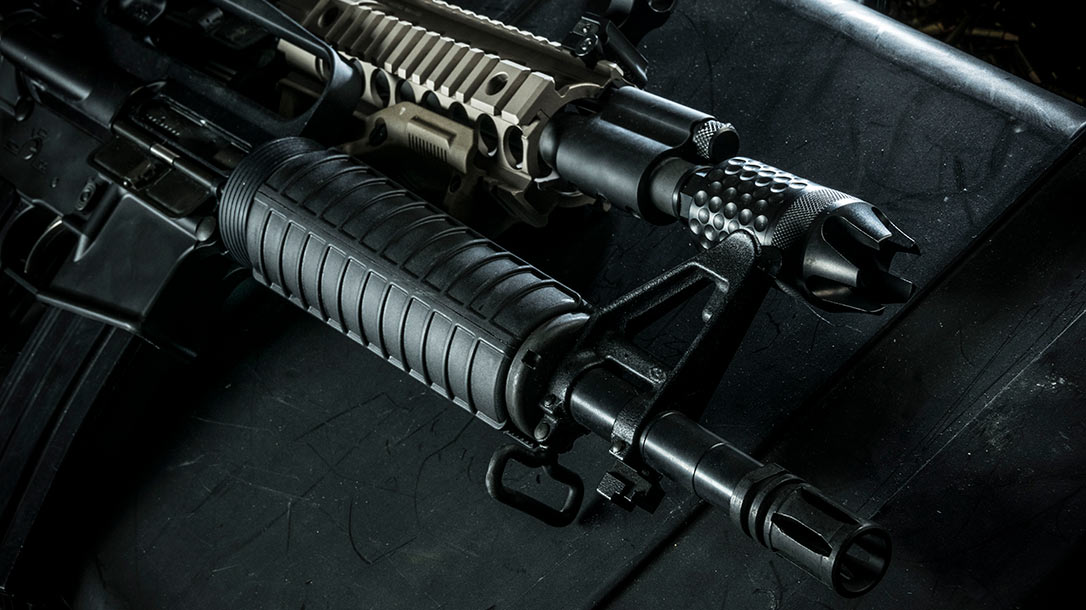The past few decades have seen the rise, fall, and resurrection of the piston-driven AR-15’s popularity in America. The AR-15, in its most common form, is a direct-impingement, gas-operated semi-automatic rifle chambered in 5.56mm. But gas piston-driven platforms also found an important place in hard-use operation. So, we looked into the differences between direct impingement vs gas piston driven platforms, trying to settle the age-old argument.
Direct Impingement vs Gas Piston AR-Platforms
Lightweight, accurate, and soft-shooting, the Armalite seemed like a space rifle when it was introduced in the 1960s. But bad ammo, worse information (the M16 was labeled “self-cleaning” and thus didn’t include a cleaning kit), and the rough jungle environment of Southeast Asia lead to these rifles having an unprecedentedly high failure rate.
Consequently, direct-impingement rifles were stuck with a bad reputation for reliability in the eyes of the general public. Not to mention armchair generals everywhere. Just when this reputation was beginning to fade, the War on Terror began. This propelled it back into the public consciousness when reports of M4 carbines failing in combat made national news.
Advertisement — Continue Reading Below
SOCOM responded by claiming they desperately needed more reliable, piston-driven guns for special forces (thus spawning the SCAR program). But the Army decided the advantages of piston-driven rifles over direct impingement (DI) weren’t worth the huge investment.
However, we’re talking about thousands of rifles and millions of components. What might be a bad investment for a military branch could very well be the best thing since sliced bread for a civilian shooter or law enforcement officer.
So, is it worth the trouble for a shooter to invest in a piston-driven upper? Or is it just marketing hype?
Advertisement — Continue Reading Below
Both direct impingement and piston-driven rifles rely on siphoning excess hot, expanding gas from a cartridge’s detonation to cycle the action automatically. Weighing out the pros and cons of each system is difficult with a thorough understanding of each. And it’s impossible without this knowledge.
Direct Impingement
On direct impingement rifles, a small gas tube is attached to the barrel towards the muzzle, leading back into the receiver. When a round is fired, some of the excess gas is siphoned from the barrel. The gas travels down the gas tube and acts directly on the bolt carrier group.
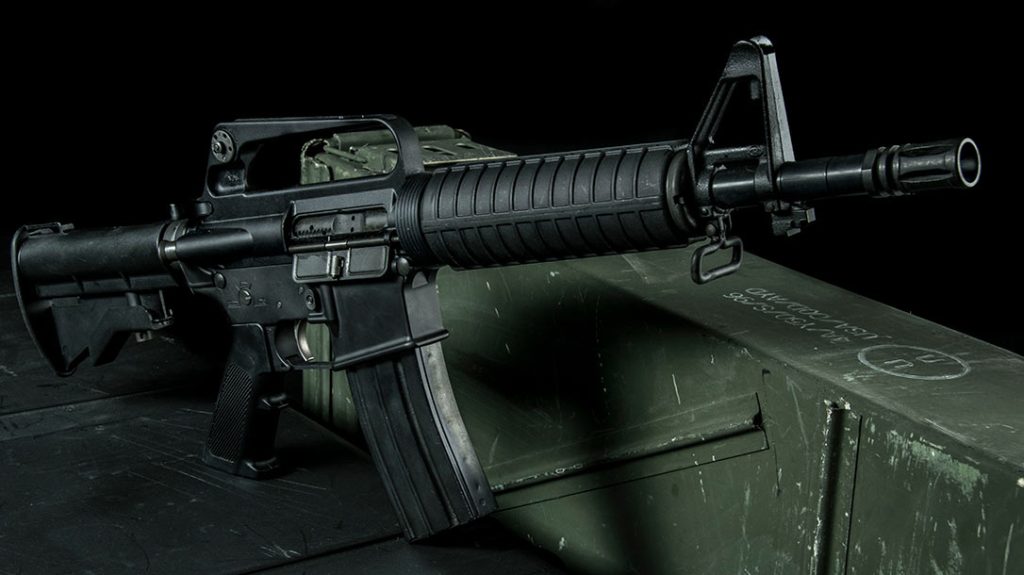
Advertisement — Continue Reading Below
This propels the bolt carrier group rearward against the buffer spring inside the receiver extension. The buffer spring then returns the carrier group forward to its resting position.
The downside to this method is that, by necessity, it dumps hot gas and carbon directly into the action. However, the benefits of it are reduced weight, linear recoil, and less recoil because the carrier isn’t terribly heavy.
More than that, the small gas tube barely interacts with the barrel. As a result, this leaves its harmonics the same as if it were free-floated. This means greater consistency (the barrel will essentially be in the same place with the same forces acting upon it every time) and, in turn, better accuracy.
Advertisement — Continue Reading Below
Piston-Operated
Piston-operated ARs operate via a long- or short-stroke operation. In both cases, a gas tube above the barrel siphons gas from a fired shot and pushes on a piston. This imparts this force on the carrier group.
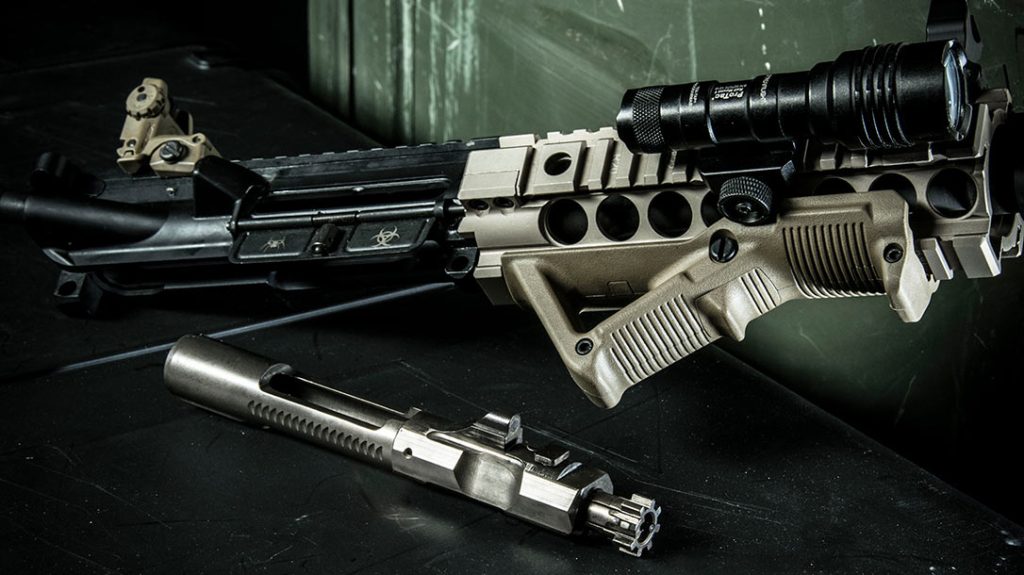
If the gun is short-stroke, the piston isn’t attached to the carrier but simply protrudes into the action during cycling. Long-stroke pistons, on the other hand, are physically attached to the bolt carrier group.
Advertisement — Continue Reading Below
The downsides of this method are weight (the piston weighs much more than a thin gas tube) and increased felt recoil because of the additional rearward-moving mass. Though, with guns chambered in 5.56mm, the difference in recoil is negligible.
Additionally, the piston systems tend to act on the barrel in a different way every time they come to rest. As a result, this decreases consistency and, by extension, accuracy.
The advantage of piston guns is decreased fouling, which means better reliability. This isn’t a huge issue with regularly maintained normal-length rifles. But with pistol, SBR-length carbines, or rifles running a suppressor, the difference is substantial.
Advertisement — Continue Reading Below
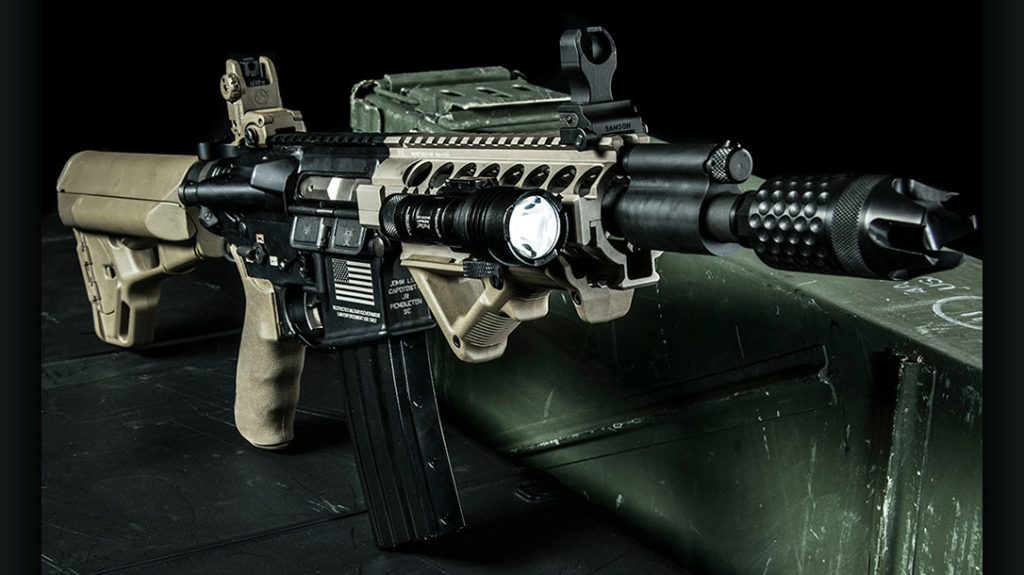
Can Considerations
Suppressors function by delaying the release of hot gas from the muzzle, reducing the sound signature of the muzzle blast. It’s like letting the air out of a balloon slowly versus popping it. By doing so, they increase dwell time and thus the amount of hot gas and fouling traveling back into the action.
With DI rifles, this compounds the issue of excessive fouling. From my personal experience, I can tell you an M4 fired with a quality sound suppressor and new ammo will look like it’s never been cleaned after four 30-round magazines.
Advertisement — Continue Reading Below
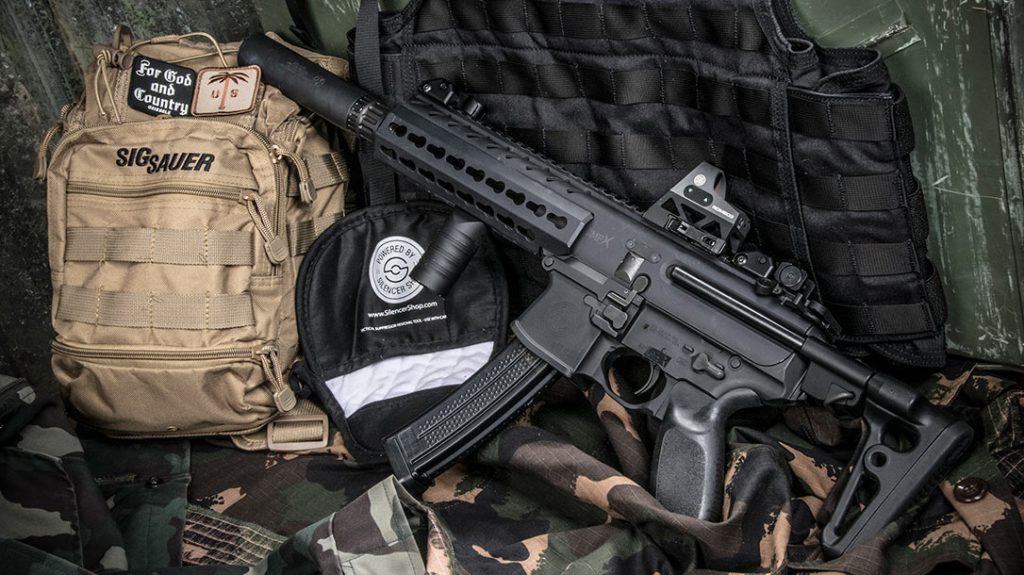
Similarly, short-barreled guns tend to have their gas ports oversized. This is because they were designed to siphon gas at the end of a longer barrel. On normal-length barrels, this would be at a point where the internal pressure of the barrel was decreased because the internal volume of the barrel itself is greater.
That said, because both methods of operation are being applied to the most modular rifle in human history, either can be dialed in to compensate for these inherent flaws.
Advertisement — Continue Reading Below
So, does that mean these flaws are overstated? Is this whole debate more a matter of taste and less of performance?
From The Horses’ Mouths
To get some answers, I reached out to several prominent companies. Each has decades of experience building both direct impingement carbines and piston-driven ones. I hoped to get a better ground-level view of these differences from folks that build these guns every day.
One of the first companies I contacted was LWRC International. The company is known for making some of the most reliable, rock-solid piston guns on the market, like its M6. I asked LWRC Vice President of Product Development Jeff Clemmer for his thoughts on the differences in accuracy between the two methods of operation.
He replied, “Piston-driven guns do produce some change to the harmonics versus direct-impingement rifles. But in terms of possible accuracy, the difference is minimal.”
This makes sense coming from an employee of a company that makes piston guns. I’m not saying Jeff is right or wrong. However, if someone has a vested interest, I’m going to get the other side of the story first. So, what about a company that only makes DI rifles?
I reached out to the original maker of the AR-15, Armalite Inc., for their take on the differences between the two. Armalite put me in contact with their go-to product specialist, Joe Hajny. (Editor’s note: Hajny has since left Armalite and currently works with Lewis Machine & Tool.)
His response was similar but more in-depth.
He stated, “There is no significant difference between DI and piston in terms of accuracy, but there is a difference in terms of ease of maintenance and reliability.”
When pressed further, Joe relented that certain configurations of AR-15 are easier to make more reliable with piston setups. But with the right combination of gas system and buffer weight, DI guns can be just as reliable.
Impartial Analysis
I wanted to hit up one last source to get that missing piece of the puzzle. Specifically, the one thing so difficult to find in modern politics and news reporting—impartiality.
If I could find a company that built both piston-operated and direct impingement rifles, I might have that last missing piece of the puzzle. With that in mind, I reached out to one of the newer companies to start building DI AR rifles and also builds incredible amounts of piston-driven designs—both AR-based and proprietary: Sig Sauer.
I am an owner of both their 9mm MPX and 5.56mm SIG 516 piston AR. So, I knew SIG understood both how to build a piston gun from scratch and how to adapt existing designs.
I called up Mike Joslin, Assistant Rifle Product Manager of Sig, and asked him a few questions about both the accuracy and safety of piston systems.
Mike stated, “People think piston guns, they think AK, but this is far from the truth. Piston guns like the MCX and MPX are designed to cleanly and efficiently run, allowing for a more balanced system than standard DI guns.”
I came back at Mike with a question about accuracy differences between the two.
He replied, “Modern pistons are designed to return to the same spot every time, reducing the variance in harmonics and timing/cyclic rate that can change point-of-impact.”
In essence, Mike’s point is that while piston rifles have a track record of being less accurate than DI models, modern machining can all but negate these differences.
A more substantial difference between the two designs is weight. Piston setups tend to be heavier in general and more nose-heavy than DI rifles. But, as materials and metallurgy continue to advance, these too will become too close to matter.
The Takeaway
When I started writing this piece, I had some presumptions about both systems. I’ve always felt that, from my personal experience, the differences between the two are mostly overstated.
The only time my point of view shifted on this is when I began to delve into the realm of NFA-regulated, short-barreled rifles and sound suppressors. Both of these put an incredible strain on rifles by pushing their operating methods to the extreme.
In a nutshell, if a shooter’s biggest concern is weight, they should stick to a direct impingement-operated rifle. They have a lighter overall weight, with everything else being equal.
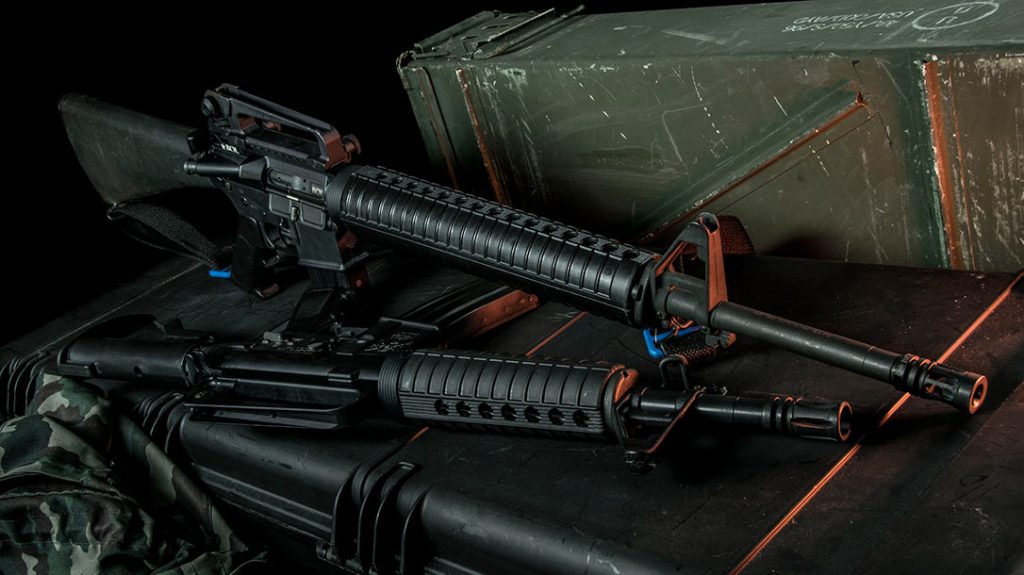
Alternatively, shooters looking to run very short pistols, sound suppressors, or SBR carbines will be better served with a piston-operated firearm. Though truth be told, both differences can be negated with extra add-ons like adjustable gas systems or lightweight rails.
If you’re still on the fence, relax. Modern rifle-makers are constantly pushing the boundaries of both configurations. Eventually, there might not be any functional difference between the two.
For the time being, if a shooter can’t decide, they should buy whichever configuration feels better in their hands. Ideally, from a reputable company. This will ensure they get a quality firearm, regardless of the operating principle.
This article originally appeared in May-June 2022 issue of Tactical Life magazine. Get your copy or digital subscription at OutdoorGroupStore.com.
